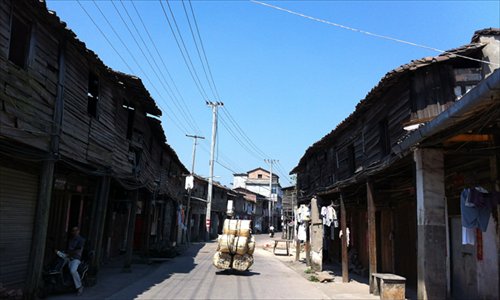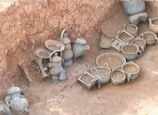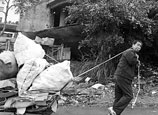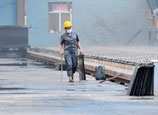
 |
| A part of the old street in Lichuan county, Jiangxi Province. Photo: Zhang Zhilong/GT |
Lichuan county in Jiangxi Province, a two-hour drive away from the capital Nanchang, has carried on quietly this past age, without attracting too much attention to itself. It has always taken great pride in its old street, lined with two-story traditional houses.
But now a secretive government plan to renovate the old street has residents concerned about whether the government is determined to actually protect the street, or simply wants to knock it down and start again. Local intellectuals are worried that the street will be left without any resemblance to the past and residents living in the traditional houses along the street will be forced out.
This concern started in May when Lichuan first announced new plans to protect and transform the old street. Part of the ancient city of Lichuan that accommodates 23,000 people, the old two-story houses are divided into business and housing and are still very much in use. The street that is being targeted contains over 100 well-preserved houses, some over a century old and others built before 1949. The project wants to restore hundreds of houses that were built in the Ming or Qing dynasties centuries ago, decorating some of them with the flair of historic celebrities and restoring 100 stores, according to Jiangxi Daily.
The county government said it made the move after receiving suggestions from Li Zhen, a well-known expert on ancient building protection and a professor with the Architectural Design and Research Institute of Tongji University in Shanghai.
Lessons to be drawn
Five years ago, as Tu Jiwen, a retired official with the county's standing committee of the local People's Congress, recalls, the local government was still hesitant on whether to demolish the old street.
Tu was invited by the local government to discuss the fate of the old street in a meeting back in 2008.
"That was the first time and last time I was invited," said Tu to the Global Times. .
The original purpose then was to tear down the old buildings and develop the area into a business street, Tu recalled.
Tu and most other participants of the meeting were strongly opposed to the plan, explaining that the streets had too much cultural and historical value to be so bastardized. At the time, their suggestions were adopted.
As the plans went into limbo, Tu went on a media offensive, writing several articles in Jiangxi Daily and People's Daily, seeking to bury them once and for all.
In an article entitled Don't ruin the old street in our times, published in People's Daily in 2011, Tu expressed deep regret about the demolition of the ancestral Deng temple, a well-known local family.
The site of the temple is in ruins now, surrounded by other buildings that remain intact. Tu insists that this fate should not be repeated.
Tu's concerns are shared by Huang Shaoqing, a local high school Chinese teacher. Huang is another self-appointed protector of the area, which he has studied this for decades.
Huang said that the destruction of the Deng temple indicates the flippant attitude of the local government toward history. Huang claims the Ming Dynasty-era temple was the only one of its kind in Jiangxi. But the local government was short of money in the mid-1990s and sold the temple off to a local businessman for 200,000 yuan ($32,000). He demolished it and took away its relics, according to Huang.
"For years, people condemned this, but the leader who was in power then has now been promoted," sighed Huang.
But the temple's destruction is now done and dusted. What is of active concern to local and national historians is what the government will do with the old street. Seeking to dodge the question, the local government has obfuscated, focusing time and time again only on the need to build fire access passages in the old area of the city and vaunting the building of new residences.
Fu Jian, an engineer involved in the project, stressed the necessity of building fire access passages, since small-scale fires often break out in such structures.
The county's publicity department told the Global Times that they are to build three fire access passages along the street, each six meters wide. They explained that the old street was too crowded and that the fire engines can't enter the street.
Fu told the Global Times that residents who live on the planned route of the fire passages will need to move out and will be relocated in new buildings nearby.
"This will also help reduce the population living in the old street since it's too crowded, which is not good for the protection of the old buildings," said Fu.
However, when pressed for further details, Fu stalled and refused to answer how many residents would be relocated in total and how many would stay, simply saying he didn't have such figures available.
Fu also repeated that these actions are to better protect the old street. But he could not comment further on the progress, since the project is now just tearing down a few buildings where the fire accesses are to be built.

















 Quadruplet sisters and their family
Quadruplet sisters and their family


![]()
